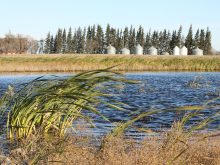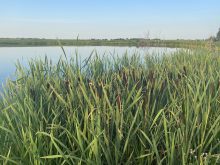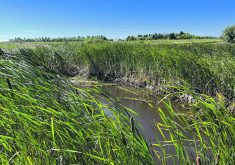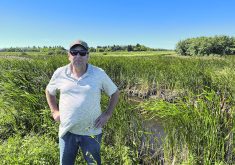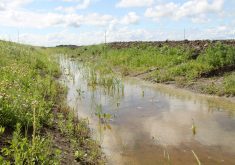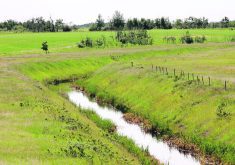KIPLING, Sask. — Eric Widdup says the Water Security Agency’s permitting process for agricultural drainage is exasperating.
“The politics and the red tape involved are overwhelming,” he told a Saskatchewan Association of Rural Municipalities division meeting last month.
“It’s almost like pulling teeth to get an ag drainage permit. The process is at best dysfunctional and at worst designed to fail.”
Widdup farms about 4,000 acres near Kipling where drainage issues have been contentious. He is also a councillor in the RM of Kingsley and part of the Kingsley Conservation and Development Area Authority (C & D), which maintains permitted pumps and outlets near the town.
Read Also

Farming Smarter receives financial boost from Alberta government for potato research
Farming Smarter near Lethbridge got a boost to its research equipment, thanks to the Alberta government’s increase in funding for research associations.
The C & D, Rural Municipality of Kingsley and the Town of Kipling have formed a watershed association board and hope to convince the RMs of Hazelwood and Chester, which are part of the same watershed, to join.
Widdup said he is trying to use the WSA system implemented about two years ago to prove it works and show others that legal drainage improvements, are worth doing.
“If we can’t prove to our upstream neighbours that they can legally make ag drainage improvements then there would be no motivation for them to join our watershed association board and collect taxes to help us to maintain our legal and adequate outlet, which is ultimately their outlet as well,” Widdup said.
Some in the area have already challenged the C & D’s ability to collect taxes but lost their appeal.
The WSA is encouraging landowners to form networks through C & D agencies or watershed associations to construct organized works that better manage water.
“We have at this point a very substantial amount of unapproved drainage in the province,” said WSA manager of southeastern regional services Bryan Oborne. “We need to work with producers and we need to demonstrate that the process is easy.”
But Widdup said it isn’t all that easy.
His farm has obtained one permit to improve drainage on a local road and yard site and the RM has received one for a municipal road intersection, he said.
“It seems the WSA is very reticent to approve ag drainage permits based on ag needs alone,” he said. “This would cause me to be suspicious that the mandate for ag drainage is very weak.”
The province said progress is being made. Earlier this year it noted that 693 quarter sections were brought into compliance last year under the new regulations that require all existing works to be approved or closed if they are found to be unacceptable.
That means about 1,300 of about 150,000 illegally drained quarters are now compliant.
Oborne said there is a long way to go. His office was the focus of a recent provincial auditor’s review, which found that effective policies are in place but there is room to improve.
The auditor said some of the policies are still in draft form and should be finalized. The audit recommended that the WSA document all aspects of watershed risk before approving drainage applications, and that it have a formal process to periodically reassess the risk of flooding in all watersheds.
The auditor also said the agency should resolve requests for assistance on unapproved works within a clear timeframe. The investigation found that some files were outstanding for more than 20 months and at least one had been in progress for four years.
Not all regional offices were following the established processes for approval, assessing risk and enforcement, but should be, the auditor found.
Oborne agreed the WSA is still finding its way through the regulations. Landowners and networks that use a qualified person to help them with their application will find the process goes more smoothly.
He noted that a network in the Belle Plaine and Drinkwater areas involving 33 quarters was approved 12 hours after the application was submitted because everything was done correctly.
Widdup added that he wished more people were able to look at the big picture. He said he felt his motives were under suspicion at times because some people think he is only interested in improving his own land.
“This is, of course, true, but we’re also interested in helping our neighbours both downstream and upstream and we are willing to accommodate any upstream neighbours who wish to make drainage improvements across our land,” he said. “We do not fear any additional water volume that this would create.”






